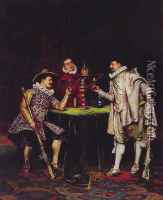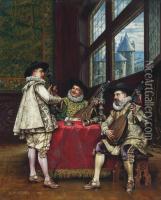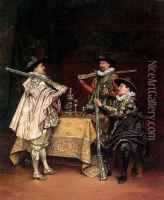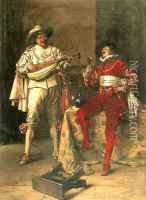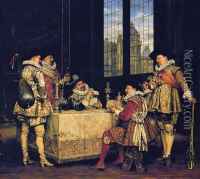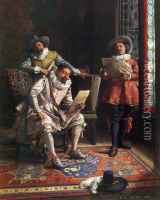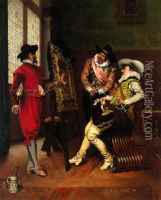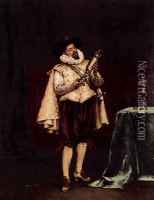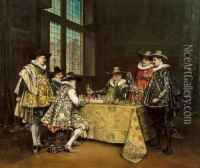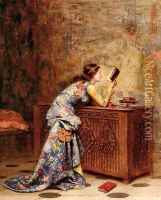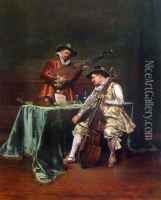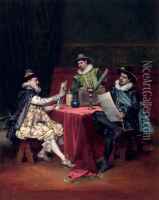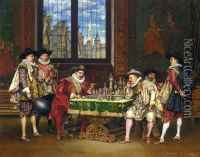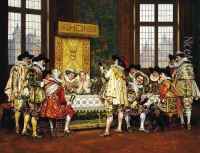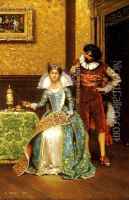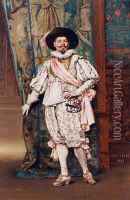Adolphe-Alexandre Lesrel Paintings
Adolphe-Alexandre Lesrel was a French genre painter who was born on May 19, 1839, in Genêts, France. Lesrel's artistic journey began under the tutelage of Jean-Léon Gérôme, a prominent French painter and sculptor associated with the academicism style. Gérôme's influence is evident in Lesrel's meticulous attention to detail and his commitment to the Academic style of painting.
Lesrel's work predominantly focused on historical and genre scenes, often depicting the 17th and 18th centuries with a particular emphasis on the elegance and costumes of that era. His paintings commonly featured figures such as aristocrats, musketeers, and cavaliers, which he rendered with remarkable precision and a keen eye for historical accuracy. Lesrel was praised for his ability to capture the texture of fabrics and the intricacies of interior settings, which lent a sense of authenticity and immersion to his scenes.
Throughout his career, Lesrel exhibited his works at the Paris Salon, where he received commendable recognition. His paintings were well-received for their narrative quality and the vivid portrayal of bygone eras. Though Lesrel's style was rooted in the Academic tradition, his works also reflect the influence of the Rococo revival that occurred during the 19th century. This revivalist movement was characterized by a renewed interest in the ornate and decorative art of the Rococo period.
Adolphe-Alexandre Lesrel enjoyed a successful career during his lifetime, and his works were sought after by collectors. However, as the art world evolved and new movements such as Impressionism and Post-Impressionism emerged, the popularity of the Academic style waned. Despite this shift, Lesrel's dedication to his chosen style remained unwavering until his final days.
Lesrel passed away on February 17, 1929, in Paris, France. Although his name may not be as widely recognized as some of his contemporaries, his artworks continue to be appreciated by enthusiasts of Academic and historical genre painting. Today, his paintings can be found in various art museums and private collections, serving as a testament to his skill and his contribution to 19th-century French art.
